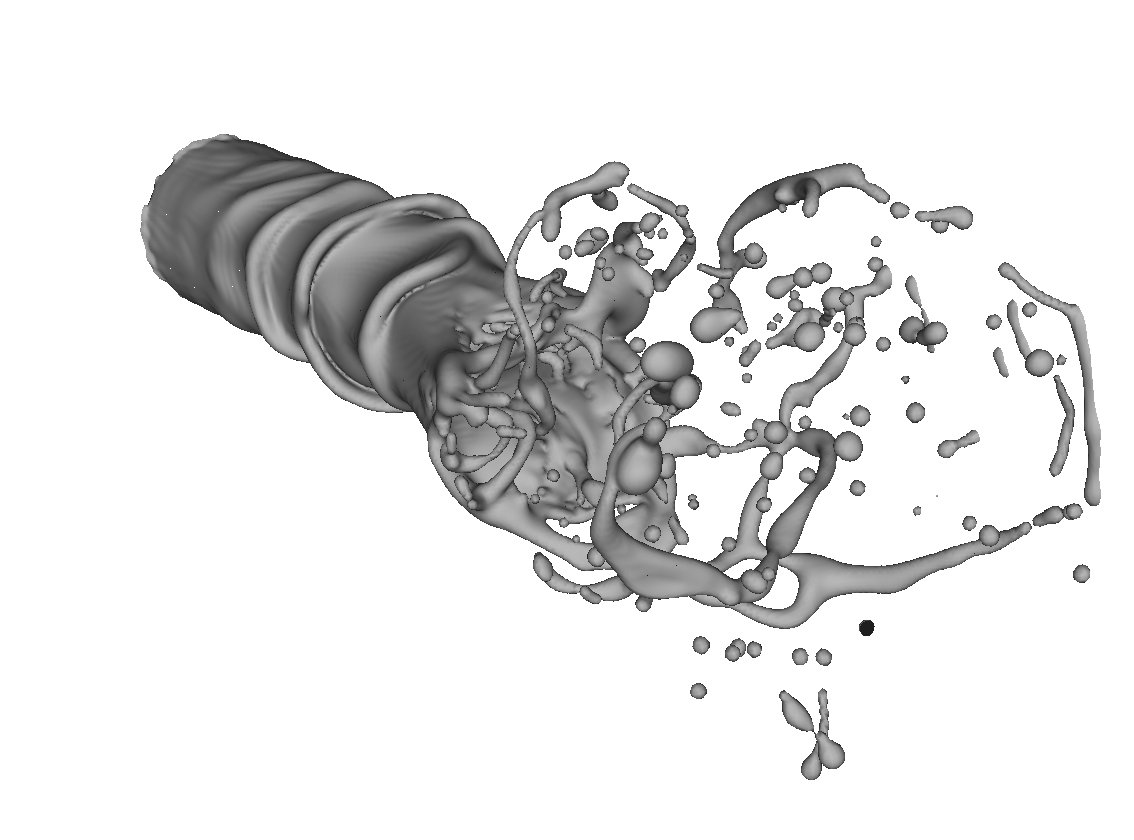Atomization
I include here part of my research work on multiphase flows
(Click to enlarge) 
|
A simulation with the Gerris Flow Solver. |
 3D liquid breakup at low Reynolds number |
(Click to enlarge) 
|
A simulation with the Gerris Flow Solver. |
 3D liquid breakup at low Reynolds number |